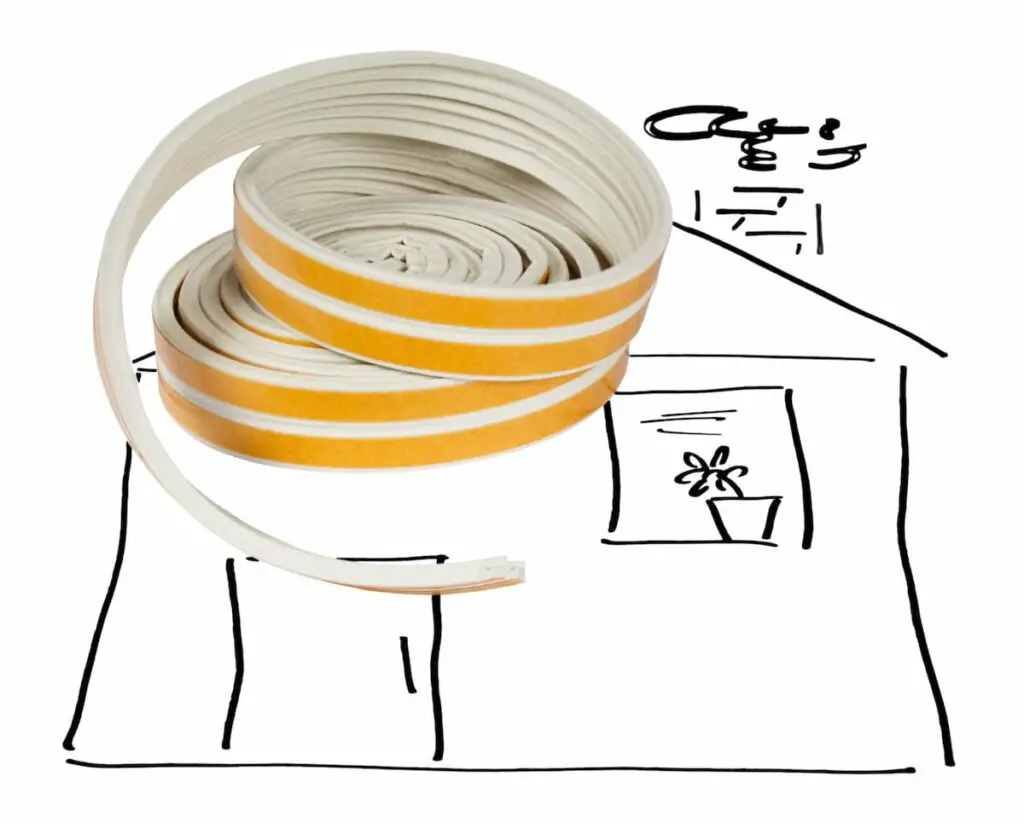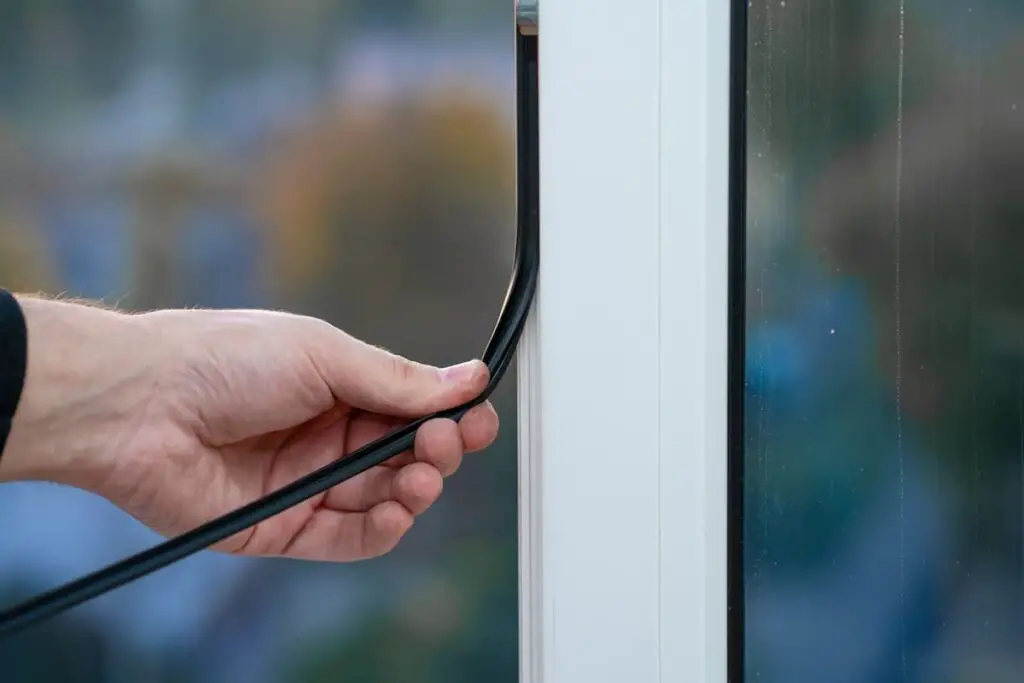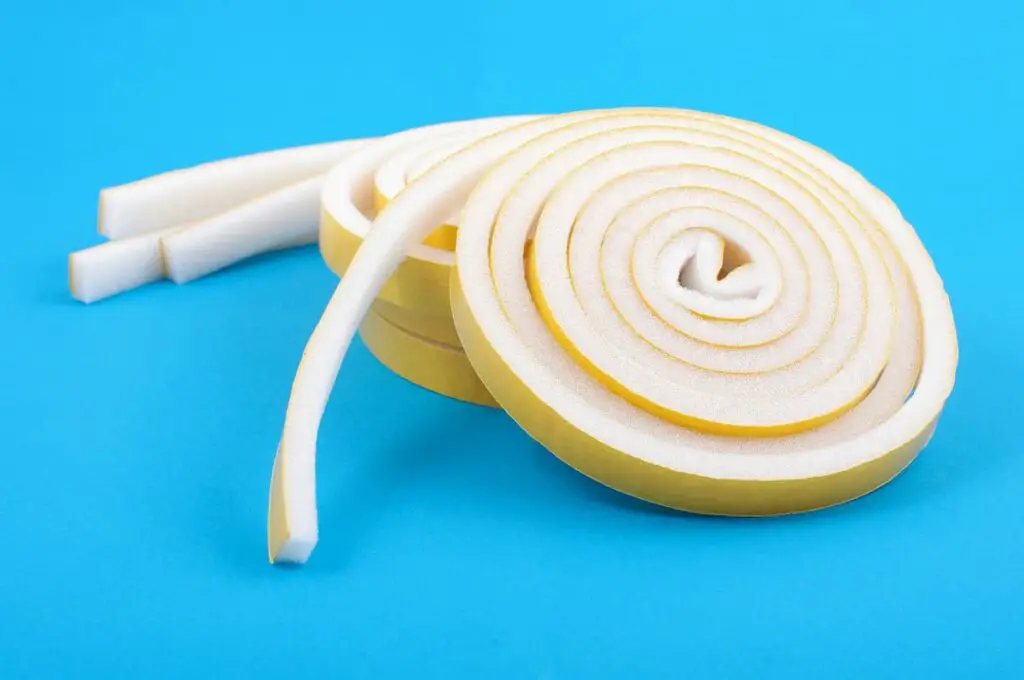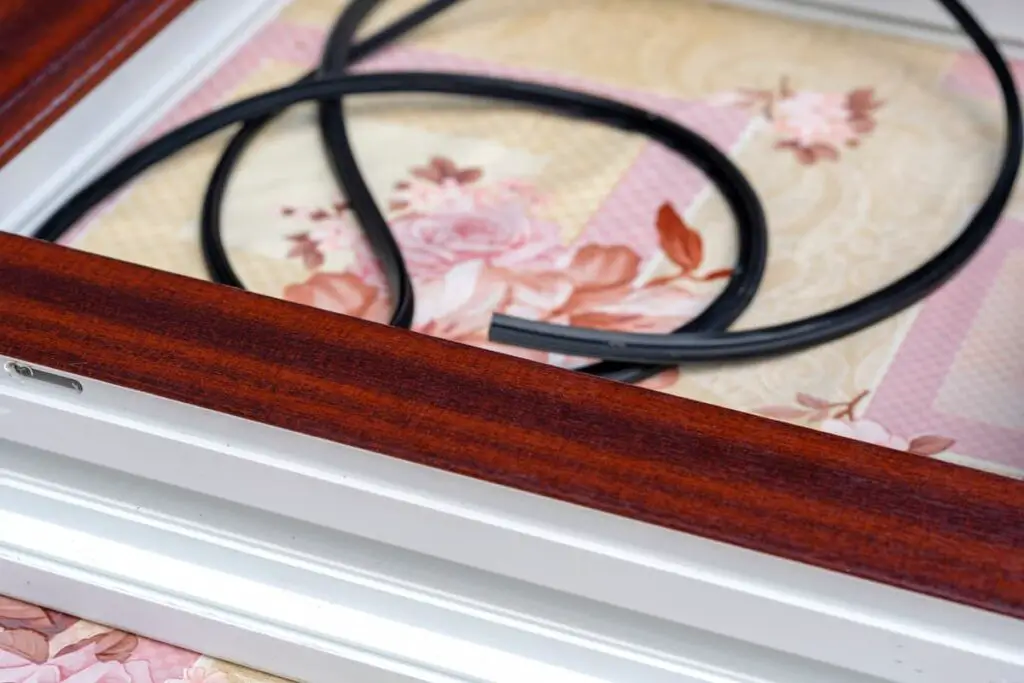As an Amazon Associate, we earn from qualifying purchases. We may also earn commissions if you purchase products from other retailers after clicking on a link from our site.
Old doors often need durable, long-lasting weather stripping. Using low-quality weather stripping on an old, worn entry point can cause cracks and leaks. You’ll also have to deal with wind drafts, increased humidity, and rain damage.
The best weather stripping for old doors is the Fowong Door Weather Stripping. This foam strip is ½ of an inch wide and 26 feet long. The neoprene tape provides flexibility and cushion, preventing the door from slamming or letting cold drafts around the edges. It also uses a grid-backed adhesive.
You could also check out the following weather stripping for old doors:
- If you want to save money, try the Cloud Buyer Weather Stripping.
- For interior doors, use the Holikme Door Stripping.
- If you have a heavy-duty door, opt for the VITAM AMO Strip Seal.
- If you have sliding glass doors, try the DGSL Foam Strips.
- Reduce wind drafts with the Cikkiio Weather Strip.
- If you want an ultra-thin sealant, use the DATADAGO Door Strip.
In this post, we’ll review each of the weather strippings mentioned above to help you choose which one is best for the old doors in your home. Enjoy!

Best Overall: Fowong Door Weather Stripping
The Fowong Door Weather Stripping comes in two 13-foot rolls, both of which measure ¼-inch thick by ½-inch wide. The wipe foam has an adhesive on the back to help you apply it to the inside of the doorway. It’s dense enough to resist moisture buildup and temperature fluctuations. It also provides excellent sound insulation.
The grid adhesive on the back of this weather stripping prevents it from falling off after using the door for a few years. It also flexes up to 30% from its original position, then moves back after the door is closed. If the dimensions aren’t big or small enough for your old door, the company offers numerous alternative sizes.
Bottom Line: Applying this weather stripping couldn’t be easier. Cut it, press it against the frame, and press it until you get to the end of the door. Cut one piece per side (top, bottom, left, and right) rather than applying a continuous piece of weather stripping.
| Material | Neoprene rubber |
| Dimensions | ½” wide by ¼” thick |
| Length | 13 feet per roll |
| Application method | Self-adhesive (grid) |
Pros
- Comes with two rolls for multiple doors
- Includes a durable grid backing for maximum durability
- Uses flexible neoprene to prevent it from ripping
- Lets you choose from multiple sizes
Cons
- Might be too narrow for old doors with more than an inch of space below them
Best Budget-Friendly Weather Stripping: Cloud Buyer Weather Stripping
You don’t have to spend too much money to get high-quality weather stripping for old doors. Try the Cloud Buyer Weather Stripping for a long-lasting foam sealant. These unique weather strips come with hashes down the center to let you split them in half. You can keep them together to double their width.
The weather stripping is made in a half-circle design. This shape provides top-notch insulation against temperatures and sounds. It also prevents moisture and mildew from forming around the edges of the door. You can choose from brown, black, gray, and white.
Bottom Line: The Cloud Buyer Weather Stripping is much more affordable than other high-end weather strips, but it’s quite effective. It also comes with a strong adhesive that keeps it from peeling off. Simply press and push to apply the strip, then cut it when you’ve achieved the desired length.
| Material | Foam |
| Dimensions | 7/20” x 6/25” |
| Length | 8 feet (split it to double the length) |
| Application method | Peel and stick |

Pros
- Much cheaper than other weather stripping on the list
- Splits into two sections to double the length
- Insulates against incoming sounds and temperature changes
- Long-lasting peel and stick application
Cons
- Uses foam that isn’t as thick since it’s hollow in the center
Best for Interior Doors: Holikme Door Weather Stripping
Are you looking for weather stripping to apply to interior doors? Try the Holikme Door Weather Stripping. This durable weather stripping is extremely flexible. The silicone material prevents it from rotting or falling off its tracks. It has a thin, strong adhesive that runs along the back of the strip.
You can choose from black, white, brown, grey, and transparent. The non-toxic material drastically improves any door’s temperature insulation. What’s even better is that it takes less than two minutes to apply this weather stripping to any door.
Bottom Line: Not only do you not have to apply this weather stripping to the door frame, but you also don’t have to worry about using glue or nails. It’s much wider than any weather stripping on the list, making it the perfect choice for interior doors with lots of space below them.
| Material | Silicone |
| Dimensions | 2” x ½” |
| Length | 39 inches |
| Application method | Self-adhesive (press and peel) |
Pros
- Widest weather stripping on the list
- Optimal insulation for hot weather
- Very easy to peel, cut, and apply
Cons
- Not as flexible as rubber, neoprene, or foam weather stripping
Best for Heavy-Duty Doors: VITAM AMO Weather Seal Strip
Whether you have an auto-closing door or a fireproof door, you might want to consider denser weather stripping. The VITAM AMO Weather Seal Strip is quite thick and comes with a hollow strip in the middle. It’s perfect for temperature insulation and reducing the sounds and vibrations of closing doors and windows.
Bottom Line: This weather stripping is durable and suitable for heavy doors. It flexes as the door opens, preventing it from cracking or shifting. It also uses a long-lasting adhesive that stops it from falling off the door or the frame. You can choose from white or black, depending on your door’s color scheme.
| Material | Rubber |
| Dimensions | 5/16” x 15/32” |
| Length | 18 feet |
| Application method | Self-adhesive (grid) |
Pros
- Ideal for heavy auto-closing doors
- Good for insulation purposes
- Uses high-quality rubber
Cons
- A bit too bulky for some doors and windows
Best for Sliding Glass Doors: DGSL Foam Insulation Weather Stripping
If you have an old sliding glass door, high-quality weather stripping is paramount. Worn sliding glass doors are notorious for letting moisture and external temperatures into a build. Consider the DGSL Foam Insulation Weather Stripping to have the best patio door for cold weather. Each strip is made with flame retardant to protect against fire damage. [Best Patio Doors for Cold Weather]

One of the best features of this foam insulation is that it’s incredibly easy to apply. All you have to do is cut it to the desired length and remove the backing to reveal the adhesive. Stick it against the door frame or the inside of the sliding glass door. It drastically lowers the sound of shutting old sliding glass doors, which can be quite jarring.
Bottom Line: This insulation foam weather stripping is easy to apply, but it lasts much longer than generic-brand sealant. You’ll receive enough weather stripping for two or three sliding glass doors.
| Material | Foam |
| Dimensions | ½” x ¼” |
| Length | 33 feet |
| Application method | Peel and stick |
Pros
- Beginner-friendly application process
- Perfect fit for all sliding glass doors
- Uses flexible foam for temperature insulation
Cons
- Not as durable as some of the rubber options on this list
Best for Wind Reduction: Cikkiio Self-Adhesive Weather Strip
If you’re tired of loud wind pushing around your old doors, try the Cikkiio Self-Adhesive Weather Strip. It’s made of dense bristles that prevent wind and cold air from getting into your home. It also prevents dust, pollen, bugs, and other debris from getting past the door.
This company offers varying strengths, depending on which door you use it for. There’s an adhesive from edge to edge, keeping it from sliding off your door frame. Those looking to reduce the sound of closing doors and ambient white noise entering the building should choose this self-adhesive weather strip.
Bottom Line: This bristle weather stripping is a great choice because it doesn’t fall apart or corrode. Furthermore, it won’t shed like low-quality weather stripping. You can use it on doors, windows, and more.
| Material | Bristles |
| Dimensions | 0.35” x 0.2” |
| Length | 32.8 feet |
| Application method | Peel and stick |
Pros
- Soft and flexible bristles
- Easy to apply within minutes
- Fits any door since the bristles can bend
Cons
- Uses a thin sealant that might have to be replaced every few years
Best Ultra-Thin Weather Stripping: DATADAGO Door Seal Strip
The DATADAGO Door Seal Strip is the thinnest weather stripping you’ll come across. This plastic sealant comes in multiple sizes, all of which prevent humidity and fluctuating temperatures.
This weather stripping is extremely durable and strong. It can hold several times its weight without losing its adhesive. Peel the backing off of the plastic strip and press it against the doorway to apply it instantly.
Bottom Line: The DATADAGO Door Seal Strip keep moisture and temperature changes at bay. It’s great for doors that don’t have a lot of room to spare.
| Material | Plastic |
| Dimensions | 25mm x 1mm |
| Length | 26 feet |
| Application method | Peel and stick |
Pros
- Extremely easy application
- Perfect low-cost solution for old doors
- Optimal choice for rainy days
Cons
- Not as thick or dense as the previous entries on the list

What to Look For in Weather Stripping for Old Doors
Installing the right kind can make a big improvement on any old door. Worn doors are often known for letting wind, rain, and external temperatures inside. If you know what to look for when upgrading the weather stripping, you’ll be able to keep the elements out of your home.
Fortunately, you only need to keep an eye out for these three attributes:
- Materials: Weather stripping is often made of metal, foam, plastic, and bristles.
- Dimensions: Some weather stripping is extremely thin, while other strips are thick and dense.
- Installation methods: Weather stripping is often installed with adhesives, nails, or a combination of the two.
Below, you’ll find a detailed breakdown of each of these factors.
Materials
Before you choose which weather stripping is best for the old doors around your home, you should consider the material options. Most weather stripping is made of thin, dense foam. However, you can also choose plastic weather stripping since it fits almost anywhere. Additionally, bristled weather stripping works wonders against the wind.
If you want heavy-duty weather stripping that’ll last for many years, you could opt for metal strips. However, metal stripping can be problematic for old doors. This heavy material can stretch pre-existing cracks, especially since it has to be nailed to the door. We suggest sticking with foam, plastic, and bristles for your old door weather stripping.
Note: This Old House claims weather stripping is also made of rubber and a few other materials. Neoprene can be quite durable and flexible, though it’s quite rare (aside from some of the suggestions on our list).
Dimensions
Weather stripping comes in long rolls, but the length should always be longer than the longest part of the door. You can cut the stripping down to size once you stick it to the door frame. For example, if you have an 8-foot door, the stripping should be 9 feet or more. Cut it after measuring it and sticking it to the frame.
The thickness and width are much more important. Almost all weather stripping will be long enough for old doors, but make sure it’s thick enough. We suggest avoiding weather stripping below a quarter-inch thick and half an inch wide. The only time you could choose thinner weather stripping is if it’s plastic or bristles.
Installation Methods
It’s best to apply weather stripping to old doors with various adhesives. Most modern weather stripping comes with a pre-applied adhesive, so you don’t have to buy or apply anything else. If you choose an adhesive that’s separate from the weather stripping, always apply the adhesive to the door and the stripping.

You’ll have to use nails if you want to apply metal weather stripping. This isn’t the best method for older doors because nails can chip, crack, and ruin the wood. For this reason, self-adhesive weather stripping is the best option for old doorways, windows, and so on.
